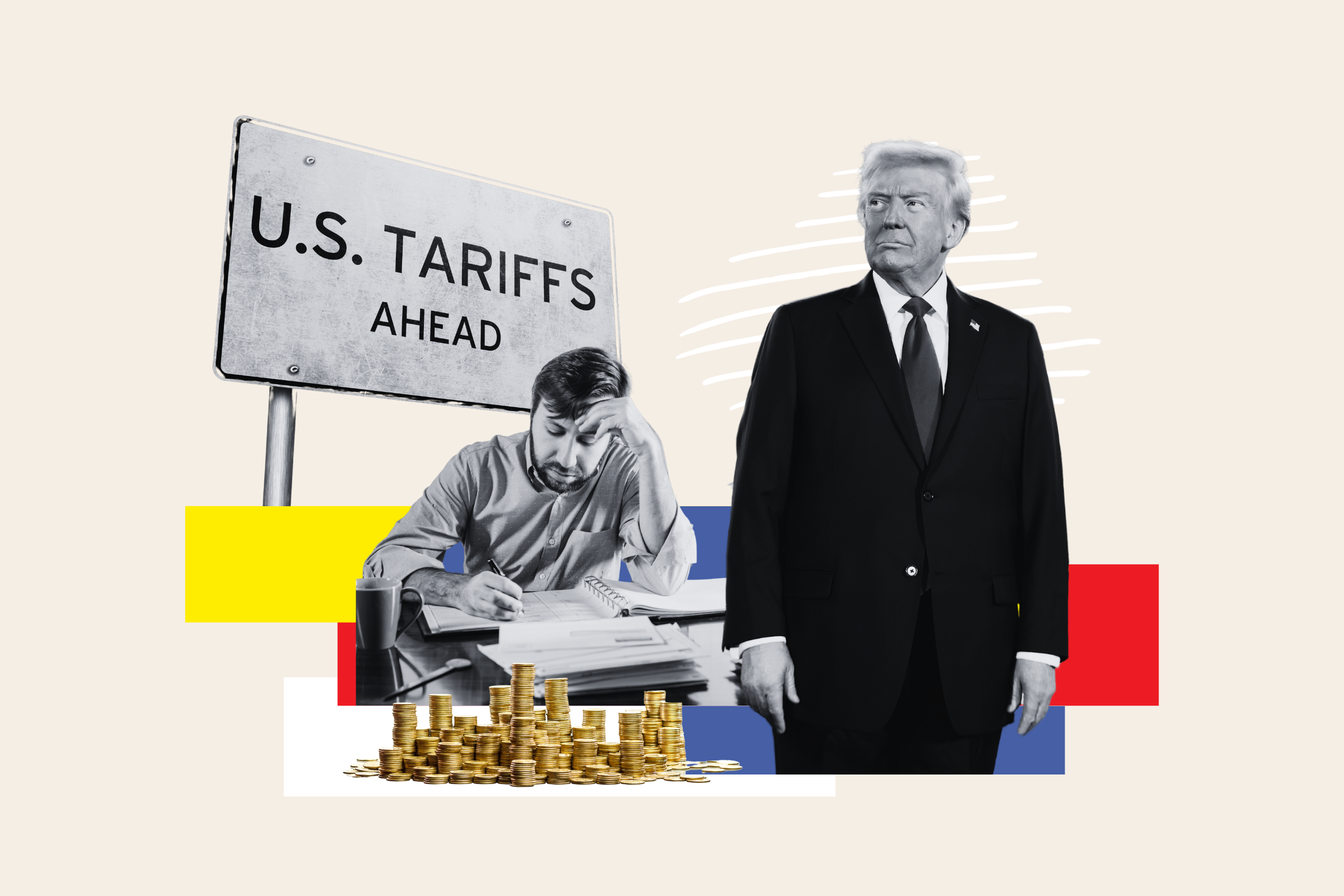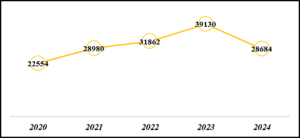Trump's Trade War: Assessing The Impact Of Tariffs On The US Economy

Table of Contents
The Rationale Behind the Tariffs
The Trump administration justified its imposition of tariffs on several grounds, primarily focusing on addressing the US trade deficit and protecting American industries from unfair foreign competition. This protectionist approach aimed to reshape the global trade landscape and bolster domestic production.
Addressing the Trade Deficit
A central goal of the Trump administration's trade policy was to reduce the US trade deficit, particularly with China. This was to be achieved by imposing tariffs on various imported goods, aiming to level the playing field and incentivize domestic production.
- Targeted Countries: China was a primary target, but tariffs were also levied on goods from other countries, including the European Union, Canada, and Mexico.
- Goods Affected: The tariffs covered a wide range of goods, including steel, aluminum, agricultural products, and consumer electronics. These were sectors deemed crucial for boosting domestic manufacturing.
- Argument of Unfair Trade Practices: The administration argued that these tariffs were necessary to counter unfair trade practices, such as dumping (selling goods below cost) and intellectual property theft, primarily attributed to China. The aim was to create a more reciprocal trade relationship.
The administration believed that reciprocal tariffs, levied on goods imported into the US, would pressure trading partners to negotiate more favorable trade agreements. This was based on the assumption that tariffs would incentivize domestic production and job creation, eventually leading to a reduction in the trade deficit. However, the actual economic outcomes were far more complex.
Protecting American Industries
Another key justification for the tariffs was to protect specific US industries from what the administration perceived as unfair foreign competition. This was seen as crucial for safeguarding American jobs and bolstering key sectors of the economy.
- Industries Intended to Benefit: The administration aimed to support industries such as agriculture (soybeans), manufacturing (steel, aluminum), and potentially others perceived as being threatened by foreign imports.
- Unintended Consequences: While the intention was to protect American jobs, the complex nature of global supply chains meant that the impact was far from straightforward. Tariffs often led to increased input costs for businesses relying on imported goods, potentially offsetting any benefits from increased domestic production. The actual protection offered to specific industries proved to be a highly contested and complex issue.
Economic Impacts of the Tariffs
The economic consequences of Trump's trade war were far-reaching and multifaceted, affecting consumer prices, businesses, employment, and global trade relations. The actual impact varied considerably across different sectors and regions.
Impact on Consumer Prices
Tariffs directly increased the cost of imported goods, leading to higher prices for consumers. This inflationary pressure affected various goods depending on the tariff schedule.
- Goods Affected: Prices of imported goods subject to tariffs, such as steel, aluminum, and certain consumer products, rose noticeably. This effect rippled through the economy, affecting many downstream goods and services.
- Pass-Through of Tariff Costs: The extent to which tariff costs were passed on to consumers varied by industry and market conditions. Businesses with inelastic demand (where consumers are less sensitive to price changes) were more likely to successfully pass through the additional costs.
- Impact on Different Income Brackets: The impact of increased prices was not evenly distributed across income brackets. Low-income households, which spend a larger proportion of their income on essential goods, were disproportionately affected by increased inflation.
Effects on Businesses and Employment
The impact on businesses was a mixed bag, with some sectors experiencing benefits while others faced significant challenges. Job creation and losses were similarly unevenly distributed.
- Industries Experiencing Significant Impacts: Industries heavily reliant on imported inputs experienced increased costs, potentially leading to reduced output and job losses. Conversely, some domestic industries producing goods that were now more competitive due to tariffs saw increased production and potential job gains.
- Ripple Effect Throughout the Supply Chain: The impact of tariffs extended beyond the targeted industries. Disruptions to global supply chains led to knock-on effects throughout the economy, affecting businesses at various stages of production and distribution. Businesses faced increased uncertainty, impacting investment decisions.
Impact on Global Trade Relations
Trump's trade war significantly strained international trade relations, leading to retaliatory tariffs from other countries and disruptions to global supply chains.
- Trade Agreements Affected: The trade war significantly impacted existing trade agreements like NAFTA, later renegotiated as USMCA. The renegotiated agreement was aimed at addressing some of the issues that led to the initial tariff increases.
- Examples of Retaliatory Tariffs: Other countries responded to US tariffs by imposing their own tariffs on American goods, escalating trade tensions and creating uncertainty in the global market. This reciprocal imposition of tariffs led to a significant disruption in global trade flows.
- Implications for Global Trade and Economic Cooperation: The trade war highlighted the risks associated with protectionist policies and their potential to undermine global trade and economic cooperation. The uncertainty created by the escalating trade disputes hindered investment and growth globally.
Conclusion
Trump's trade war had a complex and multifaceted impact on the US economy. While the administration aimed to reduce the trade deficit and protect American industries, the consequences were far-reaching and often unintended. Increased consumer prices, disruptions to global supply chains, and retaliatory tariffs from other countries all contributed to a more complicated economic picture than initially anticipated. There's no simple consensus on the overall effect; some sectors benefited while others suffered significant losses. The long-term effects are still being analyzed.
Further research into the long-term effects of Trump's trade policies is crucial to understanding their full impact on the US economy and global trade. By analyzing the data and various perspectives on the impact of tariffs, we can better inform future trade policy decisions and avoid repeating similar mistakes. Continue exploring the complexities of Trump’s trade war and its lasting impact on the US economy by researching further into relevant economic data and analyses.

Featured Posts
-
 Winners Of Minnesota Snow Plow Naming Competition Announced
Apr 29, 2025
Winners Of Minnesota Snow Plow Naming Competition Announced
Apr 29, 2025 -
 Pete Rose Pardon Trumps Plea For Mlb And Baseball Hall Of Fame
Apr 29, 2025
Pete Rose Pardon Trumps Plea For Mlb And Baseball Hall Of Fame
Apr 29, 2025 -
 Alan Cumming Shares Beloved Childhood Memory From Scotland
Apr 29, 2025
Alan Cumming Shares Beloved Childhood Memory From Scotland
Apr 29, 2025 -
 Eveniment Pw C Modificari In Sistemul De Taxare In Romania 2025
Apr 29, 2025
Eveniment Pw C Modificari In Sistemul De Taxare In Romania 2025
Apr 29, 2025 -
 Adhd And Driving Research Based Strategies For Safer Driving
Apr 29, 2025
Adhd And Driving Research Based Strategies For Safer Driving
Apr 29, 2025
